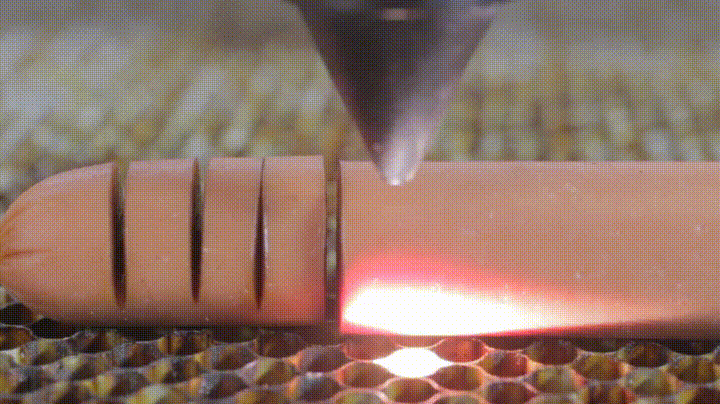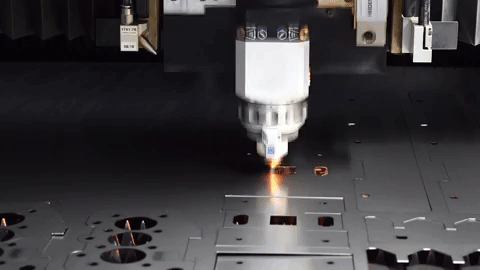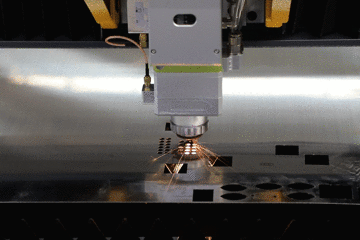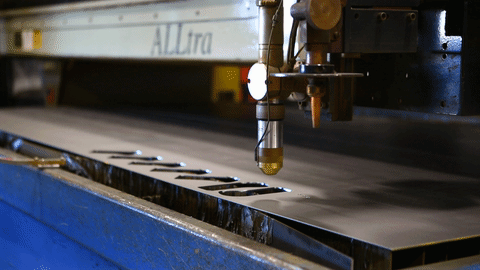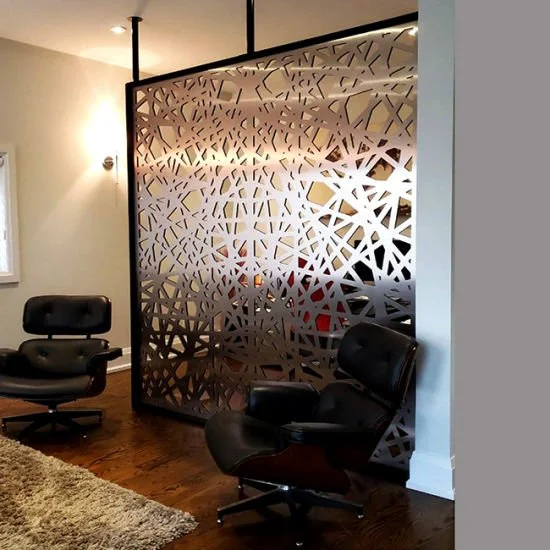Top Industrial Laser Methods
CO2 Lasers
CO2 lasers are workhorses in the world of industrial cutting and engraving. Utilizing a carbon dioxide gas mixture as the active medium, these lasers emit infrared light when electrically stimulated. This light is incredibly versatile, capable of cutting through an impressive array of materials including metals, plastics, wood, ceramics, and even organic materials. Temperatures reaching around 1500°C during cutting, CO2 lasers can easily melt or vaporize materials, making them ideal for a variety of applications. From aerospace components to architectural models, products requiring intricate designs or precise cuts often rely on CO2 lasers for their versatility and reliability.
CO2 Laser Procedure:
1. The CO2 laser beam is generated by exciting a mixture of carbon dioxide, nitrogen, and other gases using an electric discharge.
2. The laser beam is then directed through a series of mirrors and lenses to focus it into a concentrated spot.
3. The focused beam is directed onto the material surface, where it rapidly heats and vaporizes the material, reaching temperatures of around 1500°C,cutting through it with precision.
4. Computer-controlled motion systems guide the laser beam along the desired cutting path, allowing for complex shapes and designs to be cut accurately.
CO2 Laser
Pros:
Versatile, capable of cutting a wide range of materials.
High precision and accuracy.
Minimal heat-affected zone.
Suitable for both cutting and engraving applications.
Cons:
Limited effectiveness on reflective materials like metals.
Slower cutting speeds compared to some other laser types.
2. Fiber Lasers
Fiber lasers have revolutionized the world of metal processing with their unparalleled precision and speed. These lasers utilize optical fibers doped with rare-earth elements like erbium and ytterbium to emit focused beams of light. Primarily used for cutting and marking metals, including steel, aluminum, copper, and brass, fiber lasers excel in delivering precise cuts with minimal heat distortion. With temperatures exceeding 2000°C, fiber lasers swiftly heat and melt metal surfaces, making them ideal for industrial applications requiring high accuracy and efficiency.
Fiber Laser Procedure:
The fiber laser beam is generated by exciting rare-earth-doped optical fibers using diode lasers.
The laser beam is then guided through a series of lenses and mirrors to focus it onto the material surface.
The focused beam rapidly heats and melts the metal, cutting through it with high precision.
Computer numerical control (CNC) systems guide the laser beam along the desired cutting path, allowing for complex shapes and designs to be cut accurately.
Fiber Lasers
Pros:
High cutting speeds and efficiency
Excellent precision and accuracy.
Minimal heat-affected zone, reducing distortion.
Low maintenance requirements.
Cons:
Limited effectiveness on non-metallic materials.
Initial equipment costs can be high.
3. Plasma Lasers
Plasma lasers represent a cutting-edge approach to material processing, harnessing the power of high-energy plasma to emit laser radiation. These lasers produce a high-energy plasma that emits laser radiation, enabling cutting, welding, or surface modification with exceptional precision and power. Capable of processing metals, plastics, ceramics, and composites, plasma lasers offer versatility and efficiency. With temperatures reaching well over 3000°C, plasma lasers can achieve high-speed cutting and welding, making them indispensable in industries requiring robust and rapid material processing solutions.
Plasma Laser Procedure:
Plasma lasers generate a high-energy plasma by ionizing a gas medium, typically using electrical discharges or intense electromagnetic fields.
The plasma emits laser radiation, which is focused onto the material surface using mirrors or lenses.
The focused laser beam rapidly heats and melts the material, reaching temperatures of around 3000°C, allowing for precise cutting, welding, or surface modification.
Computer-controlled systems guide the laser beam along the desired cutting path, enabling complex shapes and designs to be processed with precision.
Plasma Lasers
Pros:
High cutting speeds and efficiency.
Versatile, capable of processing a wide range of materials.
Minimal heat-affected zone, reducing distortion.
Suitable for both cutting and welding applications.
Cons:
Initial equipment costs can be high.
Limited effectiveness on highly reflective materials.
Requires careful control to prevent damage to sensitive materials.

